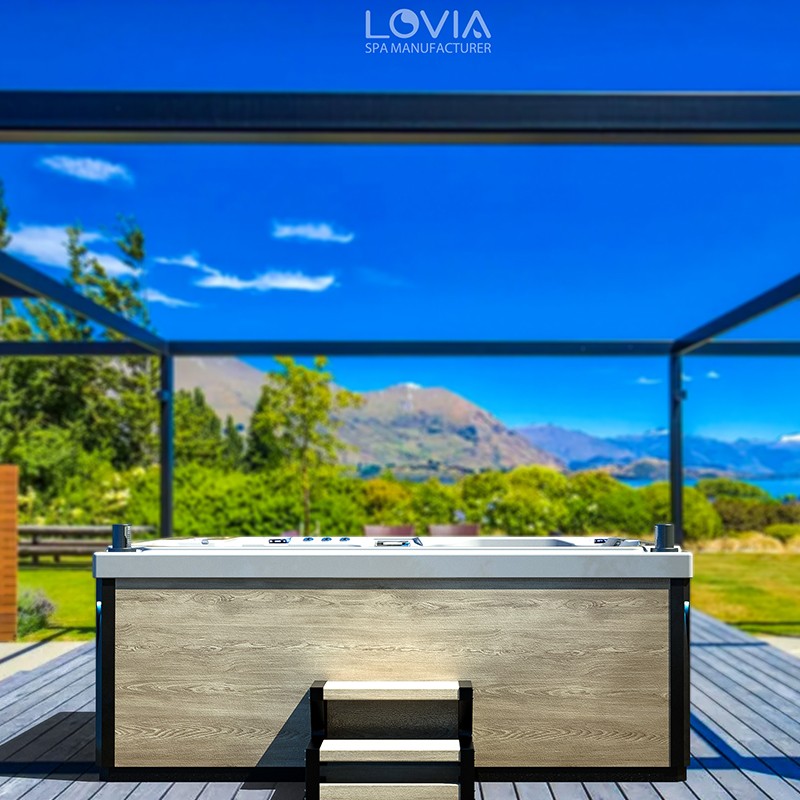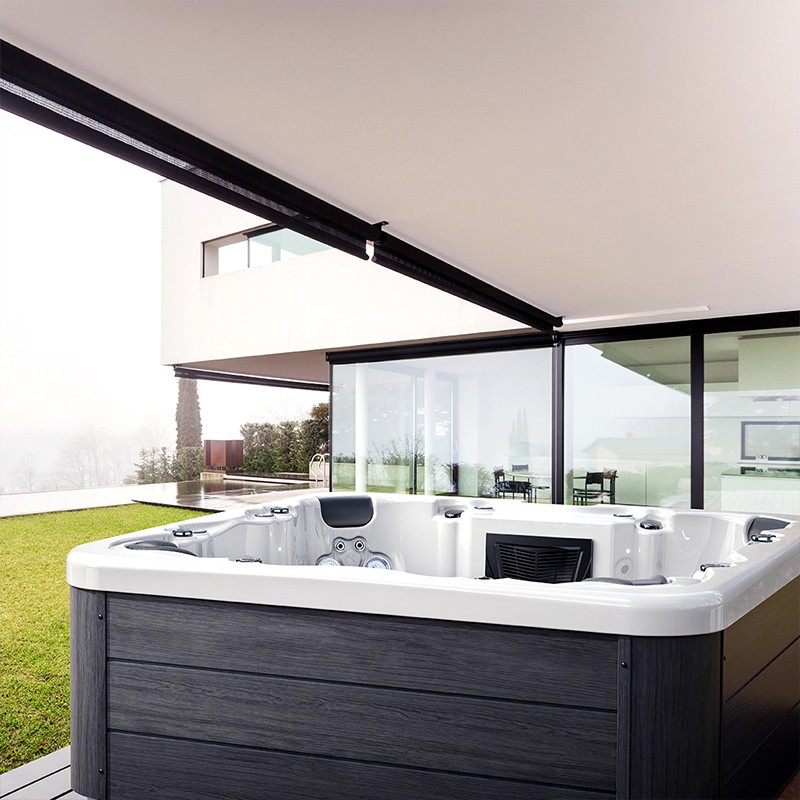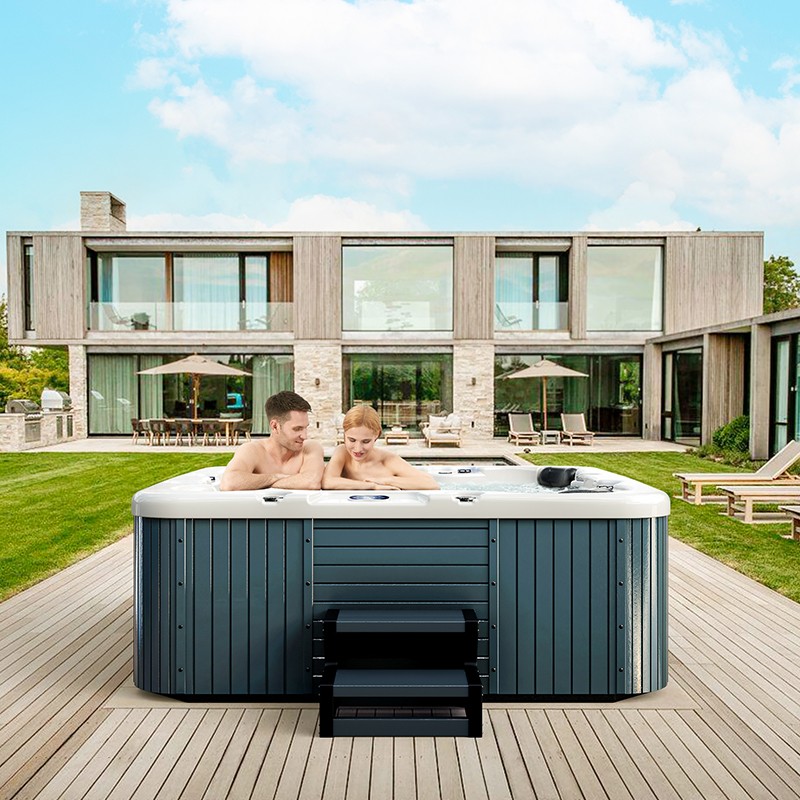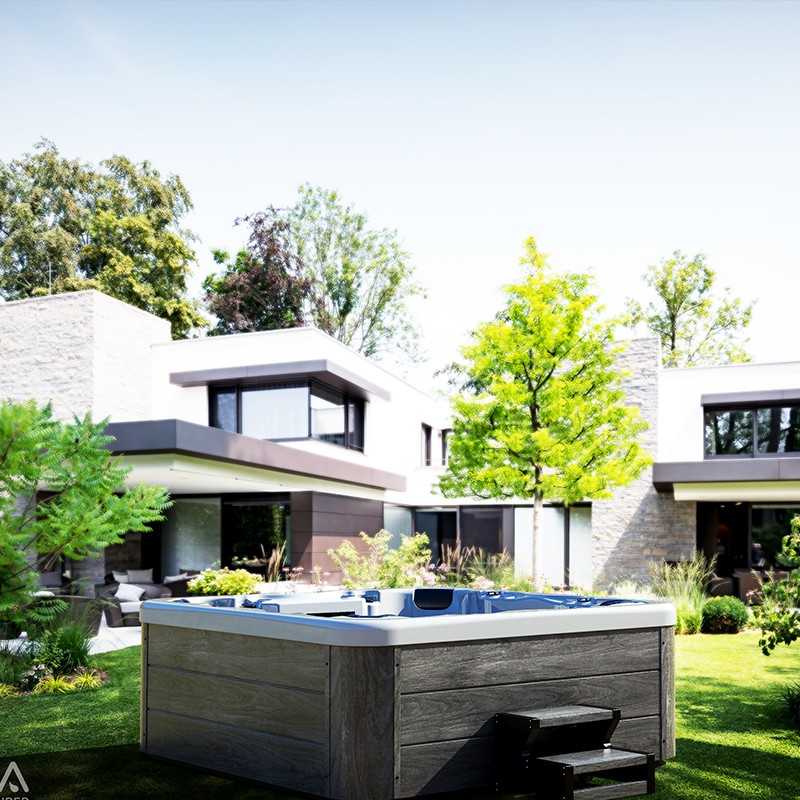
Where are stains and algae most likely to grow in a spa massage bathtub?
2025-05-13 15:35As a popular leisure facility, more and more families and resorts choose to install outdoor spa massage bathtubs. However, as the frequency of use increases, how to keep the bathtub water clean and hygienic has become an important issue. Spa bathtubs are usually located in an outdoor environment and are easily affected by external pollutants. In addition, the water temperature is high and the humidity is high. These conditions provide a breeding ground for stains and algae.
Therefore, knowing which parts are most likely to breed stains and algae is crucial to maintaining the hygiene of the bathtub. This article will discuss in detail the parts of the outdoor spa massage bathtub that are prone to stains and algae, the reasons, and the corresponding cleaning and prevention measures.

Common stains and algae in outdoor spa massage bathtubs
Before analyzing the specific locations, you first need to understand the common types of stains and algae in outdoor spa massage bathtubs. According to the source of water, the use environment and the surrounding ecological conditions, the main stains and algae that are easy to breed in outdoor spa massage bathtubs include:
Outdoor spa massage bathtub stains
● Scale: The calcium and magnesium ions and minerals in the water will be deposited on the surface of the bathtub under the influence of water temperature, forming scale. These scales will gradually thicken if they are not cleaned for a long time, affecting the appearance of the bathtub and may clog the pipes.
● Grease stains: Chemicals such as the user's skin, cosmetics, skin care oils or sunscreen will accumulate in the water and adhere to the surface of the bathtub to form grease stains. Especially after multiple uses, such stains are often difficult to remove.
● Dirt residue: As multiple people use the spa bathtub, hair, skin keratin, dirt, sewage and other debris will accumulate in the water. These substances will adhere to the inner wall and nozzle of the bathtub to form stubborn stains.
Outdoor spa massage bathtub algae
● Green algae: Green algae usually grow in a well-lit, warm and nutrient-rich environment, especially in spa bathtubs that have not been cleaned for a long time. They form green spots on the surface of the bathtub, affecting the water quality and the beauty of the bathtub.
● Blue algae: Blue algae is a common water pollutant. It will reproduce rapidly in the water, forming a thick film, often green or blue-green, and sometimes accompanied by a pungent odor.
● Black algae: Black algae generally grow in the dark areas of the bathtub. They have low light requirements and can reproduce in hidden corners or nozzles, forming a dark film that is difficult to remove.
After understanding the types of stains and algae, we can analyze the areas where these pollutants are most likely to grow and their causes in a targeted manner.

Where are stains and algae most likely to grow in outdoor spa massage bathtubs?
The design of outdoor spa massage bathtubs usually has multiple parts that can contact water, including the inner wall, bottom, seat, massage nozzle and water circulation system of the bathtub. In these areas, the risk of stains and algae is different due to different water temperatures, humidity, frequency of use, and water flow. The following is an analysis of the areas most likely to breed stains and algae and the reasons:
1. Inner wall and bottom of the bathtub
The inner wall and bottom of the outdoor spa massage bathtub are the areas where water contacts most frequently, and are also the places most likely to breed stains and algae. Especially during the use of the spa bathtub, the water temperature is high and the humidity is high. In addition, substances such as human sebum and skin care products are easy to accumulate on these surfaces and form stains. In areas with strong sunlight, algae such as green algae will multiply rapidly, especially in the corners and recesses of the bathtub, where algae grow more vigorously.
● Stains on the inner wall: Grease stains and skin residues will adhere to the inner wall of the bathtub with the fluctuation of water flow. When the water temperature is high, these stains will penetrate into the surface of the material and gradually form stains that are difficult to remove.
● Algae growth at the bottom: Water accumulation at the bottom is common, especially when the bathtub is not cleaned thoroughly, which can easily form an area where water accumulates. This area has less water flow and is an ideal place for algae, especially green algae, to grow. When algae attach to the bottom, they usually form a green, sticky film, which affects the water quality and appearance.
2. Massage nozzles and water pipes
Massage nozzles and water pipes are one of the key components in outdoor spa massage bathtubs. Because these components are often exposed to high-temperature water flow, the water flows in the fine pipes in the nozzle for a long time, which easily accumulates minerals, dirt and grease stains in the water and forms scale. Due to their complex structure, massage nozzles and pipes often become "hidden corners" for algae to grow.
● Nozzle blockage and stains: The water flow in the nozzle often carries grease, stains, and even residues of skin care products and bath products. After long-term accumulation, the inside of the nozzle may be blocked, forming stubborn grease stains and scale. These stains not only affect the massage effect, but also easily become a breeding ground for bacteria and algae.
● Algae and scale in pipes: In water flow pipes, especially in places with slow flow, scale and algae are easy to form on the pipe walls. Over time, algae will multiply rapidly in the pipes with the help of water temperature, causing pipe blockage or poor water flow.
3. Corners and joints of the bathtub
The corners and joints of the outdoor spa massage bathtub are often blind spots for cleaning. Due to the retention of water flow, these places are particularly prone to accumulation of dirt, minerals, grease and skin residues. Especially on the joints or sealing strips, stains are often trapped and not easy to clean, making them ideal places for algae to grow.
● Water accumulation and dirt in corners: The corners of the bathtub are often areas with slow water flow, where dirt is easy to accumulate, and scale and skin residues are also easy to accumulate here. After long-term use, these accumulated dirt will gradually harden and become stubborn stains that are difficult to remove.
● Algae growth at seams: There are usually tiny gaps in the seals and connection points at seams, where there is more water accumulation and less light, providing ideal conditions for algae growth. Algae and microorganisms can reproduce rapidly in these hidden places, forming black or green algae spots.
4. Water temperature control and filtration system
The water temperature control system and filtration system are key parts to ensure the normal function of the outdoor spa massage bathtub. The filtration system is used to circulate clean water and maintain the cleanliness of the water quality, while the water temperature control system is responsible for regulating the temperature of the water. However, due to the complexity of water quality and the unevenness of water flow, the temperature control and filtration system sometimes become a "dead corner" for the growth of stains and algae.
● Contamination inside the filter and water pump: The function of the water pump and filter is to maintain the smooth flow of water and the cleanliness of the water quality, but during long-term use, impurities will accumulate inside the filter, including skin flakes, grease stains, minerals, etc. If these stains are not cleaned regularly, they will become a breeding ground for bacteria and algae.
● Moisture accumulation in the temperature control system: The water temperature of the spa bathtub is usually high and the humidity is heavy, which makes the temperature control system an area where algae can easily grow. The water pipes and electrical connection parts of the temperature control system are easily affected by moisture and become a source of contamination.

How to clean and prevent stains and algae growth in spa bathtubs?
To prevent stains and algae from growing in outdoor spa massage bathtubs, regular cleaning and proper maintenance are essential. Here are some effective cleaning and prevention measures:
Clean the inner wall and bottom of the bathtub regularly
Use a mild detergent to clean the inner wall and bottom of the bathtub, and avoid using too strong chemicals to prevent damage to the surface of the outdoor spa massage bathtub. Wipe corners and seams with a soft cloth or sponge regularly to prevent dirt accumulation.
Clean massage nozzles and pipes
Check and clean massage nozzles regularly to ensure smooth water flow. You can use a special nozzle cleaner to remove scale and grease stains in the nozzle. At the same time, clean the water flow pipes regularly to prevent blockage and algae growth.
Use water quality control products
Use water quality control products such as algaecides, descaling agents, filter cleaners, etc. to help maintain clean water and prevent algae and stains.
Regularly change water and maintain the water circulation system
Change the water and clean the water circulation system at regular intervals to ensure that the water quality of the outdoor spa massage bathtub is always in the best condition. When using a filter, check its filtering effect regularly and replace the filter element in time.

What certifications do Lovia Spa products have?
All Lovia Spa products meet international safety and quality standards, including CE, ETL, ROHS, REACH, SAA, and ISO9001 certifications. This ensures your purchases are compliant in key global markets. We are a trusted supplier to distributors and brands worldwide looking for high-quality, certified spa products at competitive prices. Buy with confidence from a factory known for excellence and innovation.
